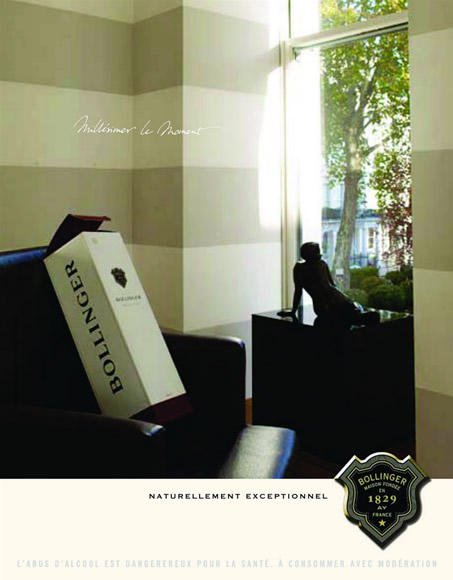Muriel Escalle
The art of suggestion characterises the works of Marina Pescatori who reveals great sensitivity through the strength of her sculptures.
She immortalises an unexpected gesture, a fleeting expression of her models and captures the emotion of the moment.
This spontaneity gives intensity and movement to her nudes, to the faces demurely turned away, expressing an eloquent, simple and discrete sensuality.
Her talent as a portrait artist, using water colour and "sanguigno", is shown in her work in terracotta, which is the material she prefers working with as it allows her to express herself freely. The moving expression on the faces of her sculptures seems to reflect an inner vitality and this is fascinating.
Marina Pescatori's talent is sincere. Through her work she manages to give the onlooker what he is searching for: an aesthetic emotion and the freedom of his imagination.
Muriel Escalle
Aix en Provence, February 2003
Journalist "Maisons & Décors Méditerranée"
Paolo Rizzi
We are surrounded by synthetic products such as plastic or nylon even in the production of art. Why not return to the familiarity of wood, for example? Why not return to sculpture in noble marble or in the none less noble bronze or even in eternal clay? Moreover, the "ancient" materials - as Marina Pescatori knows well - do not decay with time. Paradoxically, the ancient Romans used to say, "Aere perennius".
Here, then, are these portraits in terracotta and bronze; these figurines, these nudes by the Italo-French artist. We are immediately surprised and full of admiration. Above all, the surprise is due to the fact that she has the courage to adopt an art which dates back hundreds, or even thousands, of years. Many of today's sculptors (even famous ones) are afraid of this challenge. Marina Pescatori has an even greater reason to fear it, as her style is similar to the recent tradition of Italian masters of the last century, such as Arturo Martini, Manzu, Marini, Messina. They once again used the ancient Classic and Renaissance technique of making small bronze statues, transposing it into modern times.
How much room was there or is there to continue this impressive approach? There is room. Marina Pescatori is proving this by not adapting to the "style", in other words, by not passively reproducing ideas, historically, already used. This is why our sculptress began by doing portraits which discard formal convention, by aiming at the "reality" of the model. The great school of Roman portrait sculptors from the Republican era began in the same way. The artist looks straight into the eyes of the face which she intends to portray and she associates herself with what she sees. Through interpretation, she forms the physiognomic connotations of her models, the organic characteristics of the body structure. Furthermore, she enters into the psychology of the portrait, transposing the features of the soul into the features of the body.
Difficult? Certainly, very difficult and the risk is the inevitable consequence of the entrance into the third millennium. The danger is to fall into the trap of using a deliberate affectation in style, to be conditioned by outside influences. It is also the confrontation with the performance of important artists of the past. However, exasperating expressiveness, as many do today, leads to the search for the "signature" at all costs. This is yet another danger. Marina Pescatori is fighting to acquire her own individuality whilst not swerving from a "biological reality".
Her terracotta work and, more recently, her bronzes are classic but at the same time modern. They follow the dictate of a former era of harmony and are alive and extremely expressive. They obey the physiological laws of the human body and emphasize elegance and organic congruency. To sum it up in one word, "style".
Buffon once said, "Style is man" This is the crucial point of what Marina Pescatori is trying to say: to produce art which is personal yet, at the same time, universal. If we look at her nudes, her portraits, we discover a harmonious beauty which is reflected in the limbs, the joints, the smooth surfaces, the sinuous curves. The human body platonically reflects the idea of a divine beauty. Linked to this concept is the connection, mild, vaguely perceptible, always discrete, with the psychological and physical qualities of the artist. Just one stroke in the moulding of a foot, a nose or a shoulder is enough to recognize the signature of the artist. So the face of a child or the body of a model comes to life, acquiring a new meaning which comes directly from the soul of the artist.
It is a miracle but this is what art is all about. Sometimes it is modest and does not flaunt itself. It refuses to impose. It exists as a soft veil of lyrics.
Let us try not only to see these little bronzes and these polished terracottas but to gently caress them. The fingertip can almost sense the blood that runs under the surface. The great artists of the past such as Canova, Carpeaux, Maillol worked in the same way. One needs sensitivity to understand the limits which the artist has set for herself. These limits are the sign of an aristocratic spirit which challenges the crudeness and banality which is typical of modern times.
Paolo Rizzi
February 2000
Art critic for the "Gazzettino di Venezia"

